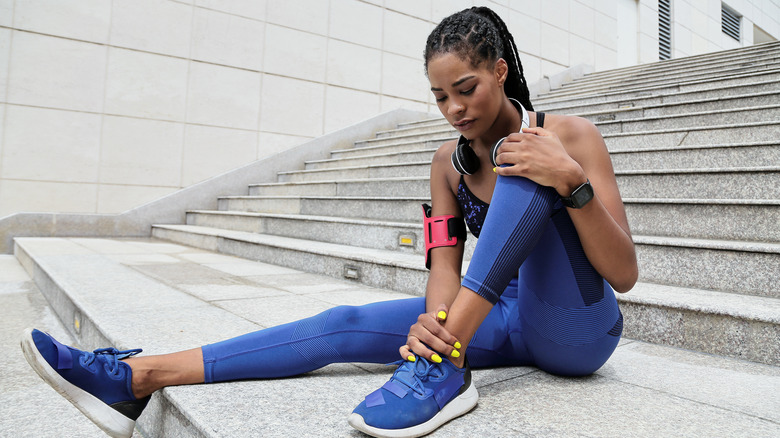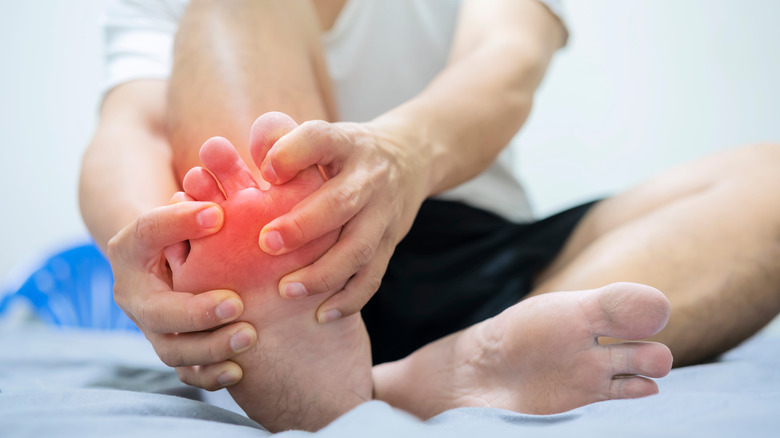What Is Pandemic Foot And What Can You Do About It?
Whether it's wearing a mask or working from home, it's no secret the pandemic has changed daily life for many people. However, one change from the pandemic has been clear to podiatrists: "pandemic foot."
Dr. Rock Positano, co-director of the Non-surgical Foot and Ankle Service at the Hospital for Special Surgery in New York told The New York Times he calls it this because his office saw a 20% to 30% increase in reports of foot pain during the pandemic. The beginning of the pandemic resulted in a decline of foot trauma cases because people were at home more due to lockdown. During this time, many people got comfortable working from home and didn't wear the proper foot attire. Now, two years into the pandemic, most families and individuals have returned to the outdoors, working in the office, and other previous routines. With that, however, has come an increase in foot trauma.
According to North Shore University Health System, not wearing shoes very often, like people did during the pandemic, can increase the risk for foot problems. It can cause structural changes to your feet, which can exacerbate problems like bunions. Additionally, it can leave unprotected feet at greater risk for fractures. Resuming activity too quickly after two years of mostly staying home barefoot can also make people more prone to overuse injuries.
How to prevent pandemic foot
Yale Medicine reports that taking care of your feet helps prevent common foot injuries, such as plantar fasciitis and tendonitis. Caring for your feet properly also helps prevent issues from developing with your back, hips, and other body parts.
One of the best ways to take care of your feet is wearing supportive footwear. While it's important to find supportive shoes for outdoor wear, at-home wear is just as important. Look for a supportive shoe with a hard sole, as that causes less pressure on the joints and tendons in the feet.
In addition to proper footwear, it's also vital to physically care for your feet, including washing them and cutting your toenails. Orthopedic surgeon Kshitij Manchanda, M.D. told the University of Texas Southwestern Medical Center he recommends washing feet with soap and water every day and taking off socks after a workout to prevent sweat buildup. He also suggests stretching before a workout to help ward off injuries. You should also avoid going barefoot to keep your feet safe. Finally, reach out to your doctor if you're experiencing any foot pain.


